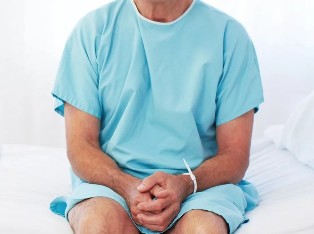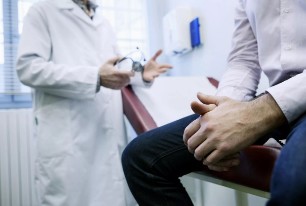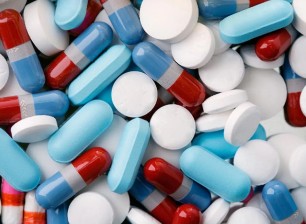What the prostate is known to many men. The disease is manifested frequent urination, pain, erectile dysfunction, and other symptoms indicating pathology of the urogenital system. Additional diagnosis is necessary to consult a urologist, who finds out that the cause of the disease and explain what the disease is, what the name means, what are the symptoms treatment.

Prostate
The prostate is a unique organ, in which the glandular tissue, and the fibrin of muscular film, which is in front of the pelvic region. The upper part of the connection to the bladder, rear, rectum, and the front — the pubic bone.
The main purpose of the prostate, highlighting the special secret that will ensure the sperm viability and motility.
This material is produced in acinus – small lobules surrounded by a muscular sheath.
Other functions of the prostate are the following:
- protection of involuntary urination;
- prevents reflux of ejaculate into the bladder;
- prevention of infection of the upper part of the urinary system (kidney, ureter).
The prostate function is controlled androgens, estrogens, steroid hormones.
The description of the disease
Male prostate inflammation (prostatitis a bad spelling) is a common pathology of the prostate accompanied by inflammation, decreased urination, sexual disorders. The swelling causes a narrowing of the channels of the prostate prevents normal outflow of the prostate juice and provokes stagnation.
Most often disease of the prostate in men diagnosed years 25 – 50 years. Sometimes pathology can be felt, sooner or later.
Reason
Prostate in men develops due to the following reasons:
- It's not contagious. Most often, the deterioration of the prostate caused by violation of the circulation lymph flow to the prostate, but congestion is associated with a rare ejaculation. Sometimes the pathology develops because of too frequent sex or regular tremor (e.g., bikers).
- Infectious. The inflammation of the prostate develops, the background of the infection. Could be bacteria, viruses or fungi that get into the prostate via the blood or lymph of the urethra, or remote infection sources (throat, teeth, sinus maxillary).

The factors causing the prostate in men are the following:
- hypothermia;
- injury;
- genetic predisposition;
- sedentary lifestyle or regular exercise fatigue;
- regular stress;
- bad habits;
- poor nutrition;
- insomnia, prolonged sleep deprivation;
- a weak immune system;
- chronic infectious processes;
- caries.
The main cause of the disease is considered a violation of the outflow from the capillary blood, which leads to stagnation, reduced local immunity in the reproduction of the bacterial flora.
The the influence of adverse factors aggravate the inflammation of prostate prolongs the duration of treatment, as well as contribute to the development of complications.
Type of symptoms
The inflammation of the prostate seen:
- pain in the pelvic (if the outflow of urine, ejaculation, defecation);
- frequent urge to urinate;
- the discharge of blood, mucus, pus in the urethra;
- turbidity in the urine;
- the decreased libido and other problems.
The severity of clinical symptoms depends on the s-form of the disease.
Sharp

Acute inflammation of the prostate, usually accompanied by increased body temperature (axillary, rectal), as well as the symptoms of poisoning (headache, joint pain, chills, nausea).
Patient's prostate gland to squeeze the surrounding tissue, nerve endings, and provoke:
- constipation;
- violation of urination, until the complete cessation of the outflow of urine;
- pain in the lumbar region, scrotum swelling.
Acute inflammation of the prostate, in men it often appears in the background of the infection of the prostate pathogens.
Important! Sometimes an acute inflammation of the prostate appears in the background performed a biopsy before.
Chronic
Prostatitis is often detected accidentally during routine examination or test other diseases.
The progression of the disease disruption of the morphology or functioning of the prostate gland that appears:
- pain;
- dysuria;
- the sexual disorders.
Calculous
This is one of the most common complications of the chronic form of the disease is characterized by formation of stones in the acinus.
What concerned prostate the men, who are already calculous inflammation depends on the severity of. Significant clinical signs emit a dull, aching pain in the groin, pubic bone and testicles.
Prolonged treatment, lack of can lead to the development of inflammation of the seminal vesicle, abscess of the prostate, MS prostate.
Stagnant
What disease, prostate and why it develops, you know, not all men.
This is the type of the affected individuals who:
- a little movement;
- the bad habits;
- used for most of the day to spend sitting;
- not lead a regular sexual life.
- the practice of interrupted intercourse.
The symptoms of prostatitis on the background of stagnation of the same manifestations, as well as chronic calculous form of the disease, therefore diagnosis requires laboratory, instrumental diagnostics. The first signal, which is manifested as congestive prostatitis in men, erection deterioration.
Infectious
Cause of the disease is clear from the title. Most often the prostate gland combat bacteria, rarely, viruses, fungi. In most cases, the infectious inflammation of the prostate is a small complication, in a different form.
This will lead to a decrease in the local or general immunity against:
- hypothermia;
- other acute or chronic infections;
- the cancer tumors;
- autoimmune diseases;
- dysfunction of the adjacent organs;
- incorrect lifestyle.

What is the prostate gland in men, which is the inflammation of the contagious type, depends on the course of the disease. Often complaints are reminiscent of symptoms of acute or chronic inflammation of the prostate.
Purulent
In special cases the pathological process involved the entire body.
The early (catarrhal) form of purulent inflammation occurs, the deleted symptoms similar to the symptoms of the disease, the bladder – cystitis. Progression of the pain worse displayed pronounced intoxication symptoms.
Vesicular form of the disease most severe, often leads to peritonitis, sepsis, and death.
Diagnosis
The primary treatment gland is controlled through the anus. During the palpation, the doctor will determine the size, structure, and outline of the body.
At this stage, the preliminary diagnosis that you want to strengthen means to the investigation, including the following laboratory methods:
- placed, and biochemical tests the blood;
- determination of PSA (prostate specific antigen);
- the clinical and bacteriological examination of the urine, prostatic secretions, smears from the urethra;
- sensitivity to antibiotics;
- semen analysis;
- detection of C-reactive protein;
- cystoscopy, or a biopsy puncture content.
The instrumental use:
- rectal ultrasound;
- CT, MRI or prostate, or other organs in the pelvis;
- biopsy.
Diagnosis is carried out, the state or private laboratories.
The treatment principles

Where how to treat inflammation of the prostate, the doctor will decide based on the results. If the patient's condition is satisfactory, then a visit to the outpatient and home medications. Anyway, the doctor explained that the risks of the disease and insisted on the hospitalization. In severe cases, the patient hospitality story extra.
Integrated
Conservative treatment includes medication to eliminate the disease cause, and the inflammation of the prostate.
The list includes the following:
- antibiotics (depending on the results of the antibio gram);
- anti-inflammatory drugs non-steroidal origin or corticosteroids;
- immunomodulatory;
- vitamins, minerals;
- vasodilator medications (if not contraindicated).
If you have a strong pain, prescribe pain medication or preparations.
After the expulsion of the acute phase use of physiotherapy techniques:
- the prostate massage;
- the electrophoresis;
- microwave treatment;
- ultrasound.
In severe cases, perform a partial or total prostatectomy (prostate removal). Inflammation of the prostate, the stones treated with the same pattern, but massage is androgen-dependent organs absolute contraindications.
Home
What is the prostate and how to treat, I want you to know, many people. The outpatient care is not the end of emergency admission to the hospital, you will need to implement all the recommendations prescribed by your doctor medication, avoid trigger factors, and not to self-medicate. In addition to the basic therapy system is useful herb, which selects the doctor.
To eliminate disease healthy:
- chamomile;
- peony;
- the leaves of plantain;
- nettle;
- burdock root;
- shorty.

Prevention
The best prevention of prostate gland in men – the regular access to a doctor setting lifestyle, which should include:
- the daily exercise;
- the regular sex;
- the proper nutrition;
- a full night.
Stress, bad habits, and other predisposing factors, in contrast, is deleted. Prostate men often lead erectile dysfunction.
To eliminate the disease, prescribe the drug of the group inhibitors PDE-5. If this does not help, you need counseling.




































